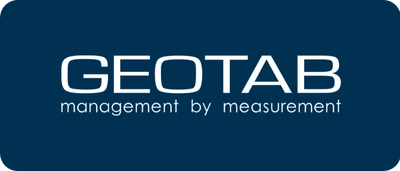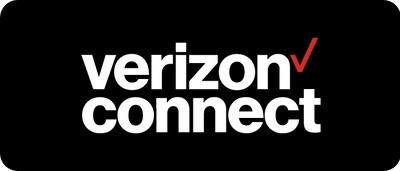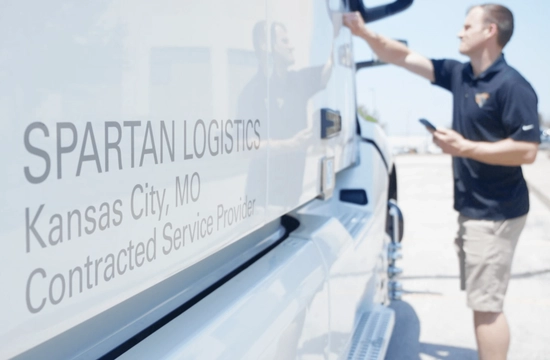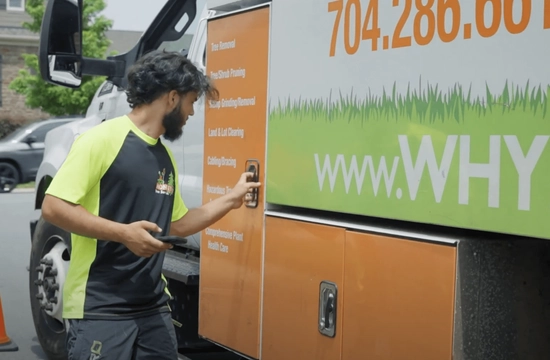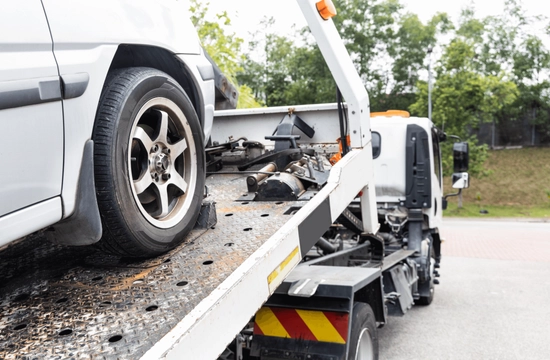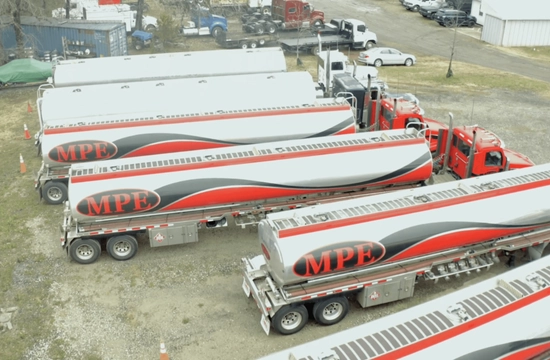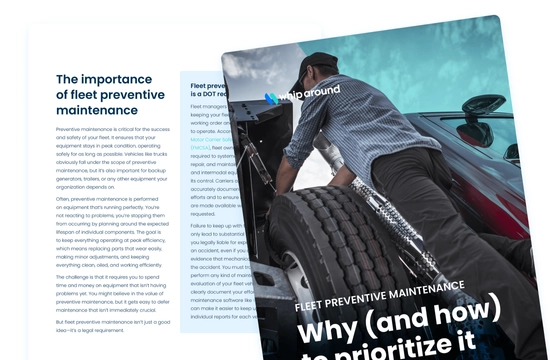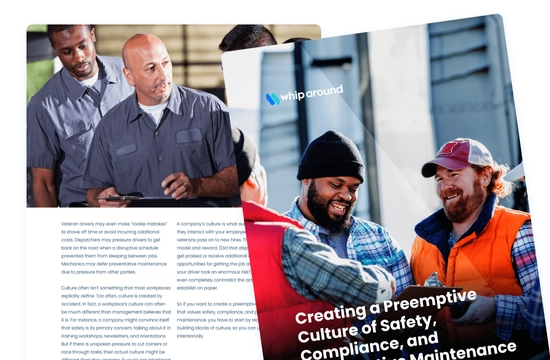- SolutionsMaintenance
Fleet maintenance software for vehicles and equipment
ComplianceEverything you need to keep your fleet compliant with the DOT
InspectionsVehicle inspection software that keeps you compliant and cuts costs
ReportingAccess the vital data you need to optimize the performance of your fleet
Fuel ManagementTrack fuel usage in real time and maximize profitability through fuel cost tracking
IntegrationsSee all - CustomersFeatured Case StudiesSee all
![Spartan Logistics]() Spartan Logistics
Spartan LogisticsSpartan Logistics is a safer, more efficient business by keeping their maintenance up and costs down with Whip Around.
View case study![Monster Tree Service]() Monster Tree Service
Monster Tree ServiceWhip Around gives Monster Tree Service visibility on vehicle & equipment location, condition, what work is due and what has been completed
View case study![Northwest Repossession]() Northwest Repossession
Northwest RepossessionNorthwest Repossession saves tens of thousands of dollars every year by staying totally compliant with Whip Around.
View case study![M. Pittman Enterprises]() M. Pittman Enterprises
M. Pittman EnterprisesThe team at M. Pittman turned to Whip Around for a digital solution to take the guesswork out of their preventive maintenance process.
View case study - ResourcesFeatured ContentSee all
![eBook: Fleet preventive maintenance: Why (and how) to prioritize it]() eBook: Fleet preventive maintenance: Why (and how) to prioritize it
eBook: Fleet preventive maintenance: Why (and how) to prioritize itEverything you need to make preventive maintenance a priority for your fleet.
View eBook![eBook: Creating a preemptive culture of safety, compliance, and preventive maintenance]() eBook: Creating a preemptive culture of safety, compliance, and preventive maintenance
eBook: Creating a preemptive culture of safety, compliance, and preventive maintenanceHow to build a preemptive culture of safety in six steps.
View eBookResource Type - Pricing
Understanding Federal Motor Carrier Safety Regulations (FMCSR): Rules, Exemptions, Penalties, and More

The Federal Motor Carrier Safety Regulations (FMCSR) are a set of minimum safety standards for commercial motor vehicles (CMV) involved in interstate commerce. These requirements are often adopted at a state level for intrastate carriers operating CMVs too. Although state by state the definition of a CMV might differ, most states still recognize a 10,001 pound GVWR (Gross Vehicle Weight Rating) as a CMV.
There are quite a few rules, regulations, and exemptions to FMCSR, so deciphering what applies to your business and what’s at stake can get fairly complicated.
This guide will walk you through where these regulations come from, who is subject to them, and how they’re enforced. Please be aware that this is not a comprehensive guide to FMCSR guidelines. For a more thorough examination of these guidelines, visit the Federal Motor Carrier Safety Administration website or a qualified transportation consulting professional.
What is the Federal Motor Carrier Safety Administration (FMCSA)?
The Federal Motor Carrier Safety Administration (FMCSA) was established on January 1, 2000, to implement 1999’s Motor Carrier Safety Improvement Act. It operates as an agency within the Department of Transportation (DOT) with the mission to reduce crashes, injuries, and fatalities involving large trucks and buses.
The agency partners with industry leaders, safety advocates, and state and local governments to keep the nation’s roadways safe and improve CMV safety through regulation, education, enforcement, research, and technology.
The FMCSA is responsible for:
- Setting standards to license commercial drivers
- Enforcing safety-related regulations for commercial vehicles
- Identifying high-risk carriers and drivers
- Improving safety information systems
- Maintaining guidelines for commercial vehicle equipment
- Regulating the transportation of hazardous materials
- Gathering and distributing data on motor carrier safety
- Raising awareness of DOT safety and regulations
- Providing financial assistance to states for roadside inspections and safety initiatives
To manage these duties, the FMCSA is involved in several CMV-related activities. On top of managing the Commercial Driver’s License (CDL) program, the FMCSA collects and analyzes safety data. This research helps provide safety resources to motor carriers, and it’s also used to craft universal motor carrier safety requirements (FMCSR).
What does the FMCSA regulate?
The FMCSR lays out the minimum requirements for anyone operating a motor vehicle in interstate commerce. And the FMCSA website defines interstate commerce as any trade, traffic, or transportation with the following criteria:
- Between a place in a state and a place outside of such state (including a place outside of the United States)
- Between two places in a state through another state or a place outside of the United States
- Between two places in a state as part of trade, traffic, or transportation originating or terminating outside the state or the United States
This FMCSR includes rules related to controlled substances and alcohol testing for those with a CDL, driver qualifications, the parts, and accessories necessary for CMVs to keep roadways safe, hours drivers are allowed to drive, and inspection, repairs, and maintenance.
These regulations are based on national safety and accident data. Because the FMCSR must cover many industries and contingencies, and because the rules are periodically amended, they can be somewhat confusing to decipher. These rules cover things like:
- How and when CMV drivers must inspect their vehicles
- How to conduct pre-employment checks for CDL drivers
- How many consecutive hours CMV operators can drive before taking a break
- How to secure cargo
- How to label hazardous material
- How often CMV operators must submit to alcohol and drug testing
- How to establish and effect a systematic maintenance program for your fleet
What are the most common FMCSR violations?
The safety protocols in place protect traffic, CMV drivers, and businesses. The FMCSA updates a list of the most common violations associated with driving a CMV.
1. Required lamp(s) not operable
There’s a reason that this is the number one violation associated with vehicle maintenance—it’s the most obvious. If you have a light out, it’s easy to spot from far away. And being pulled over for an inoperable lamp can quickly lead to a roadside inspection, which can cost you valuable time and potentially lead to other infractions or even a roadside assistance call before you’re allowed to get back on the road.
2. Operating a CMV without periodic inspection
You might be taking inspections seriously, but if you can’t provide documentation, you can’t prove it’s being done. This infraction is tied to a failure to proof of your annual, FMCSA-required inspection. And if a CMV is ever in an accident, you may need to provide proof that inspections are up-to-date, or else your company can find itself liable for damage and injuries.
3. Brakes (general)
CMVs must ensure that all inspections, maintenance, repairs, and service are performed in compliance with FMCSA requirements. This is a priority for motor carriers because sending out vehicles with unsafe brakes puts everyone at risk.
4. No/defective lighting/reflective devices
Something as simple as a broken or unattached wire can lead to lights not working properly. Daily driver inspections are critical for catching little issues like this, but they only work if the driver is out of the cab and doing a full 360º inspection.
5. Brake(s) out of adjustment
To have one brake out of adjustment on an 18-wheeler leads to an unbalanced system and the loss of 10% of the braking ability of the entire vehicle. If there are two out of adjustment, there is a 20% loss of braking ability, and at that point, the DOT will put the rig out of service until it’s repaired.
6. Fire extinguisher violation
Potential fire extinguisher violations include not having an extinguisher available, having one that has been discharged, or having one that’s unsecured. Extinguishers must be filled and located where they can be immediately useful and secured so that they don’t roll or slide around.
7. Brake hose/tubing chafing and/or kinking
Section 393.45 of the FMCSR states that brake tubing and hose must be:
- Long and flexible enough to accommodate—without damage—all normal motions of the parts to which it is attached.
- Secured against chafing, kinking, or other mechanical damage.
- Installed in a manner that prevents it from contacting the vehicle’s exhaust system or any other sources of extreme heat.
8. Oil and/or grease leak
Your vehicle may be properly lubricated, but if it is leaking grease or oil, you can run into potential problems fast. And even if it’s a slow leak that won’t lead to malfunction before the next fill-up or oil change, rain and stormwater runoff carries that fluid into rivers, streams, and watersheds. The compound effect of leaking vehicles on public highways adds up.
9. General inspection/repair/maintenance
On top of annual equipment inspections, you need to be able to provide proof that regular daily inspections are being performed. But that’s not all. You also need to demonstrate that any faults are being corrected and regular maintenance is being done. This means that you have to be on top of your reporting and records game, and why fleet maintenance software is essential.
10. Tire flat and/or with audible air leak
During Roadcheck 2021, tire issues made up the number two spot (18.6%) for OOS vehicle violations. Flat tires have a huge impact on drivers and the debris from blown tires can be a huge hazard to everyone on the road. The most common FMCSR violation is driving on a flat or having a tire that is audibly leaking air. This is a critical area that needs to be checked in pre-trip inspections.
The importance of inspections and maintenance
A critical element of FMCSA safety rules revolve around the inspection process. Commercial vehicle drivers must conduct pre- and post-trip inspections to ensure that everything is kept in good working order. Driver vehicle inspection reports (DVIRs) are an important element of safety compliance. Any fault found during the inspection means that the vehicle needs to be removed from the road until proper repairs are made.
Inspections must include areas like:
- Service brakes
- Trailer brakes
- Hand brakes
- Steering
- Lights and reflectors
- Tires
- Horn
- Wipers
- Rearview mirrors
- Wheels and rims
- Emergency equipment
The goal of these inspections is to ensure that everything is in good repair and safe for the public roadway. Maintenance compliance is a critical component of FMCSA regulations. There’s not only an expectation that defects and malfunctions get repaired in a timely fashion, but also that fleets have a system for preventative maintenance. The focus should be on avoiding faults and failures before they happen.
Retaining records
Along with those inspections, records are required to be kept for specified periods. For instance, section 396.3(b) states that if a vehicle (including trailers) is in the company’s control for 30 days or more, the company must maintain inspection records for a minimum of 18 months after the vehicle has left the company.
Section 396.11 informs us that DVIRs listing defects or deficiencies need to be maintained for three months, and must include certification that the motor carrier or outside vendor has repaired any faults. You will also find retention expectations for roadside inspection reports and annual inspections.
Who is subject to the FMCSR?
Not sure if you’re subject to FMCSA rules? You are if you operate any of the following types of commercial vehicles in interstate commerce:
- A vehicle with a gross vehicle weight rating or gross combination weight rating (whichever is greater) of 4,537 kg (10,001 lbs.) or more (GVWR, GCWR, GVW or GCW)
- A vehicle designed or used to transport between 9 and 15 passengers (including the driver) for compensation, whether direct or indirect
- A vehicle designed or used to transport 15 or more passengers including the driver and not used for compensation
- Any size vehicle used in the transportation of materials found to be hazardous for the purposes of the Hazardous Materials Transportation Act (49 U.S.C. 5101 et seq.) and which require the motor vehicle to be placarded under the Hazardous Materials Regulations (49 CFR Parts 100-177). (This includes intrastate Hazardous Materials carriers, too.)
These federal regulations don’t just apply to drivers. They apply to everyone involved in the operation of a commercial motor vehicle. And it’s also essential to note that compliance is upheld at the state level, too. Most states adopt rules very similar to the federal ones, but there can be some variance from state to state. For example, intrastate regulations regarding what constitutes a CMV can differ. So it’s critical that you familiarize yourself with state regulations.
Penalties for violating FMCSA regulations
Not being aware of FMCSA guidelines does not exempt a company from penalties and litigation. Getting caught violating these regulations will lead to lower compliance scores, and serious violations can lead to large fines.
The following table demonstrates some of the current penalties for FMCSR violations. As you can see, the heftiest fines are reserved for violations related to hazardous materials:
| Description | Citation | Penalty |
| Out-of-service order (operation of commercial motor vehicle by driver)
|
49 U.S.C.521(b)(7)
|
$2,072
|
| Out-of-service order (requiring or permitting operation of CMV by driver)
|
49 U.S.C.521(b)(7)
|
$20,719
|
| Out-of-service order (failure to return written certification of correction)
|
49 U.S.C. 521(b)(2)(B)
|
$1,036
|
| Out-of-service order (requiring or permitting operation of CMV or intermodal equipment that was placed out of service)
|
49 U.S.C.521(b)(7)
|
$20,719
|
| Out-of-service order (failure to cease operations as ordered)
|
49 U.S.C.521(b)(2)(F)
|
$29,893
|
| Out-of-service order (conducting operations during suspension or revocation for failure to pay penalties)
|
49 U.S.C.521(b)(2)(A) and (b)(7))
|
$16,864
|
| Recordkeeping—maximum penalty per day
|
49 U.S.C.521(b)(2)(B)(i)
|
$1,388
|
| Recordkeeping—maximum total penalty
|
49 U.S.C.521(b)(2)(B)(i)
|
$13,885
|
| Knowing falsification of records
|
49 U.S.C.521 (b)(2)(B)(ii)
|
$13,855
|
| Commercial driver’s license (CDL) violations
|
49 U.S.C.521(b)(2)(C)
|
$6,269
|
| Employer violations pertaining to knowingly allowing, authorizing employee violations of out-of-service order (minimum penalty)
|
49 U.S.C.521(b)(2)(C)
|
$6,269
|
| Special penalties pertaining to railroad- highway grade crossing violations
|
49 U.S.C.31310G)(2)(B)
|
$17,995
|
| Violations of Hazardous Materials Regulations (HMRs) and Safety Permitting Regulations (transportation or shipment of hazardous materials)
|
49 U.S.C.5123(a)(l)
|
$89,678
|
| Violations of Hazardous Materials Regulations (HMRs) and Safety Permitting Regulations (death, serious illness, severe injury to persons; destruction of property)
|
49 U.S.C.5123(a)(2)
|
$209,249
|
| Operating after being declared unfit by assignment of a final “unsatisfactory” safety rating (generally)
|
49 U.S.C.521 (b)(2)(F)
|
$29,893
|
| Operating after being declared unfit by assignment of a final “unsatisfactory” safety rating (hazardous materials)-maximum penalty
|
49 U.S.C.5123(a)(l)
|
$89,678
|
| Operating after being declared unfit by assignment o f a final “unsatisfactory” safety rating (hazardous materials)-maximum penalty if death, serious illness, severe injury to persons; destruction of property
|
49 U.S.C.5123(a)(2)
|
$209,249
|
| Violations related to loading and unloading motor vehicles
|
49 U.S.C.14905
|
$17,995
|
If you’re interested in the full listing of violation penalties, they can be found here.
How Whip Around can assist in FMCSR compliance
Whip Around is an app that simplifies inspections, fault repairs, and record retention. Drivers can simply pull out their phone or tablet, fill out the DOT-compliant inspection form (forms can be custom built to include any other considerations or steps), and instantly submit it to their fleet manager. The information is cloud-based, so the fleet manager has access to the report the moment it’s posted. If any faults are found, the fleet manager can instantly submit a work order to get them repaired.
You don’t have to worry that drivers are “pencil whipping” inspections and operating with faulty equipment. Whip Around allows drivers to upload photos along with inspection reports to ensure that they’re actually doing a 360º inspection.
And you don’t have to worry about reports being misplaced or illegible. Digital reports can be kept and recalled at will. If a driver or fleet manager wants to check a report, it’s simple to pull up and see what repairs and preventive maintenance have been done on an asset. And in the event of an audit, records are easy to retrieve and share.
Preventative maintenance is critical to ensuring that your vehicles are safe and roadworthy. With Whip Around, fleet managers can choose their own criteria for when service is scheduled. If distance is the criterion you’ve chosen for a specific service, you’re sent an automated reminder that maintenance is due the minute a driver records mileage in their inspection that exceeds that threshold.
Save your fleet time, headaches, and potential fines for non-compliance. Book a demo today or contact us for more information.

